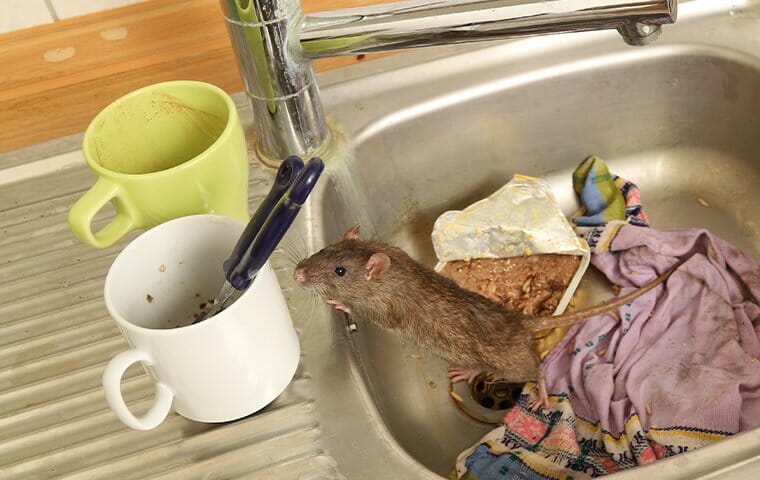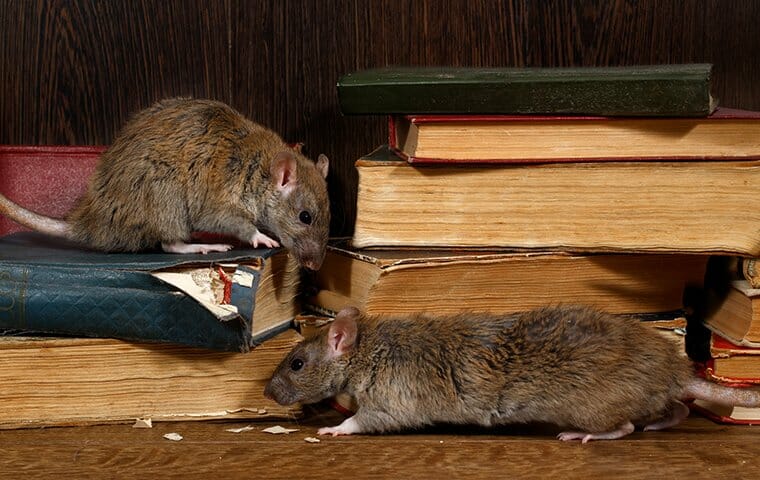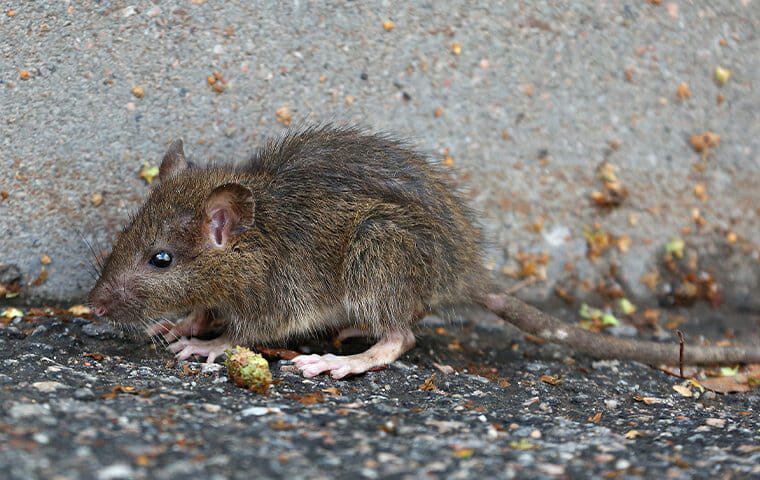How To Get Rid Of A Garden Rat
Rats: they're an unwelcome visitor to your home.
In addition to being unpleasant to look at, rats carry diseases and pose a health risk to the people you love.
They can also be incredibly destructive – chewing through walls, insulation, and electrical wiring. If you want to reclaim your home, the only option is to figure out how to get rid of rats fast once and for all.
Don't worry, though – it is possible to do this safely and effectively.
Here at Smith's Pest Management, we've helped thousands of customers around the San Francisco Bay Area handle their rat problems. In this post, we're sharing our top rodent control tips so you can do the same.
Let's dive in.
What Are Rats?
Most people are familiar with what rats look like, but let's do a deeper dive on where they live, how they choose a habitat, and what they eat:
Rats are medium-sized, toothy rodents that originated in Asia and Australia and spread throughout the world. According to the Integrated Taxonomic Information System (ITIS), more than 60 rat species exist.
Rats can range from small – about 5 inches in length – to a truly frightening version that's about the size of a large housecat and can weigh five pounds or more.
What Do Rats Need?

The answer is – very little.
Rats are challenging pests to control since they live everywhere. As long as humans are around to give rats the following three things, they'll thrive:
Food
Rats are omnivores, so they'lleat anything available to them. Although rats are best known for scavenging through trash and eating food that's left out, some rats will kill small animals like birds and lizards for food.
Water
Rats cansurvive for a month or more without directly drinking water. This is because they consume enough water in the foods they eat. When they need to drink water, rats can usually find enough in drains, pet dishes, or the condensation in the pipes or walls.
Shelter
In the wild, rats get the shelter they need from weeds, grasses, and other plants. In homes, rats will take refugeunder furniture, behind walls, or in dark, seldom-used corners of the house.
They're also famous for making nests inside of and under appliances.
Rats Reproduce Rapidly
Female rats can mate up to 500 times in just six hours, and brown rats can give birth to up to 2,000 babies in a single year – with up to 22 young in a single litter. Considering rats have a gestational period of less than a month, it's easy to see how populations quickly get out of control.
As rat populations start to grow in or around your home, you'll also notice anincrease in droppings and damage.
Rats & Disease
Increasing rat populations also puts you at risk of contracting rodent-borne illnesses. Rats are famous for carrying a variety of dangerous diseases. They've recently been shown to be carriers of Hepatitis E and infecting people with the strain. Many of them carry the disease typhus. According to the Centers for Disease Control and Prevention (CDC):
Flea-borne (murine) typhus is a disease caused by a bacteria called Rickettsia typhi. Flea-borne typhus spreads to people through contact with infected fleas. Fleas become infected when they bite infected animals, such as rats, cats, or opossums. When an infected flea bites a person or animal, the bite breaks the skin, causing a wound. Fleas poop when they feed. The poop (also called flea dirt) can then be rubbed into the bite wound or other wounds, causing infection. People can also breathe in infected flea dirt or rub it into their eyes.
4 Signs Of A Rat Infestation In Your Home

If you think you might have a rat infestation in your home, look for these tell-tale signs:
1. Strange Smells & Sounds
Rats give off a powerfulammonia smell. They're also very loud – making squeaking, scratching, and rustling noises as they move throughout your home. Noticing either of these signs is an indication that rats are in the building.
2. Droppings & Smears
Rats leave droppings behind as they move through your home. You may noticesmall, dark, pellet-shaped droppings along main rat pathways. Since rats have poor eyesight, they also create and maintain established routes along the walls.
As they travel these routes, they leavegrease smears and smudges along the walls.
3. Footprints
Think you might have a rat problem? Take a look into a seldom-used, dusty corner of your home. Rats often leavefoot and tail marks in the places they travel.
Tip: If you're unsure whether rats are around, sprinkle a fine layer of baking soda on the floor and check for fresh tracks in the morning.
4. Damage
Last but not least,rats will leave damage in their wake. They may chew through electrical cords, gnaw on furniture, storage containers, or paper, and eat food left out on the counter.
As they do, they can leave droppings and urine throughout your home, increasing your risk of exposure to diseases.
6 Signs Of Rats In Walls
It can be challenging to detect the presence of rats when they're living behind your walls.
Here are a few signs to look for:
- Strangesounds in the walls, including squeaking, scurrying, and running noises
- Piles of droppings in hidden areas, such as behind the stove, in your basement or attic, or the corners of the home
- Food packages, containers, or leftovers withbite marks
- Smudgesalong the walls, which look like a mixture of dirt and grease
- Nests made of insulation, shredded paper, bits of fabric, or other soft material
- Ductwork that seems to begnawed on or damaged
In addition to the above indications, you may also see a live or dead rat somewhere in your home. If you notice any of these signs, it's time to contact a professional pest management team like Smith's Pest Management.
What Kind Of Damage Can Rats Cause In The Home?
For such a small animal, rats can cause significant damage to a home. In addition to spreading diseases and threatening the health of everyone who lives in the house, rats can…
- Causestructural damage to wood, drywall, insulation, and other building materials
- Chew through electrical wires andincrease fire and electrocution risk – experts estimate that damage from rats and mice causes about 20-25% of undetermined house and structure fires each year in the U.S.
- Ruin furniture by burrowing into cushions and ripping out batting
- Destroy books, papers, and clothes
- Create noise that makes it difficult to sleep or relax in your home
- Nest in walls, below the sink, or even in appliances – like the back of the refrigerator or underside of the washer
While no rat damage is good, large rat populations can quicklycause expensive and irreversible damage in the home.
How To Get Rid Of Rats In The House Fast

Nobody wants to live with rats. Fortunately, these tips can help you figure out how to get rid of rats in your home:
1. Inspect The Home
Before you can get rid of rats, you need to conduct a full home inspection to find out where they're coming from.
Inspect the outside of the house – pay special attention to damaged drains, cracks in your garage door, gaps around vents, and spaces in the foundation – for obvious access points.
Inside the house, look at the vents, drains, appliance lines, and otherpotential access points. Once you know where the rats are accessing the house, you can seal the entry points and set traps.
2. Seal The Gaps
Rats don't need a large entry point to get into your house. In fact, they can squeeze through any hole that you can stick two fingers through. With this in mind,seal any gaps in your interior or exterior walls.
For lasting results, fill these gaps with wire wool, metal kick plates, cement, or caulk. Check them a few times a month to make sure they're well-maintained.
Tip: If you can't identify entry points, contact Smith's Pest Management for an expert analysis of your property. We service homes and businesses in California's San Francisco Bay Area and Central Coast.
3. Clean Up
Rats love shelter and places to hide. One of the best ways to get rid of rats without poison is toeliminate their hiding places. Clean up the clutter in and around your home and move objects away from the walls.
Keep all trash and food in closed bins, clean up any spills rapidly, and keep your pipes and drains clean.
4. Consider Trapping
As rodenticides and harsh poisons have fallen out of favor or been outlawed (as they were this year in California), trapping has become the most effective way to eliminate rats; it is what kills rats fast and effectively. Trapping is a poison-free method of reducing rat populations.
If you're going to place your own traps, be sure you use plenty of them and that youposition the traps in high-activity areas. Use peanut butter, unsalted seeds, bananas, or apples as bait.
Tip: If you prefer not to set the traps on your own, contact a professional pest management team to do it for you.
5. Use Natural Deterrent Methods
When it comes to getting rid of rats, a few simple, natural ingredients can go a long way.
Try these natural options:
- Spread peppermint oil, cayenne pepper, black pepper, or cloves around the home's exterior to prevent the rats from entering the house in the first place. Apply your substance of choice generously along the line between your foundation and the ground.
- Sprinkle crushed pepper (or spray pepper spray) near rat openings and holes. This will irritate the rats' noses and airways and discourage them from reentering your home.
6. Call A Professional Pest Management Company
If you haverats in the walls, contact a professional pest management company in your area to help you eliminate them.
They will help identify the entry points for rats, locate their nesting and food cache areas, and get them out of your walls without causing more damage to your home.
Professionals can also help you identify the root cause of the infestation and keep rats from coming back in the future.
How To Get Rid Of RatsOutside Your Home

Even if you get rid of rats within your home, it won't last long if there are still rats outside your home. This is especially true as the winter months draw near, and rats start to enter homes to seek shelter and food.
With that in mind, here are our top tips to get rid of rats around your living space:
1. Keep Your Garden Clean
Rats dislike open spaces, sokeep your lawn and garden trimmed, clean, and clutter-free; this is the best way to discourage them from setting up shop. Trim your grass often, remove piles of wood or leaves, close and lock all storage sheds and patch any holes in the siding and seal exterior garbage bins. Finally,make sure rats don't have access to food outside your home. Clean up fallen fruits, vegetables in the garden, or pet and bird food.
These simple tips will go a long way toward reducing rat populations.
2. Call In The Birds
Rats have plenty of natural predators and inviting those predators to your yard is a great way to get rid of rats.Owls, for example, can eat dozens of rats or mice in a single night. To attract owls and other birds of prey, focus on creating suitable habitat. Add a water source (like a birdbath) to your garden and consider building a nest box.
Tip: Avoid putting out bird feed to attract birds. In addition to the fact that the rats are food enough, placing bird seed, suet, or other materials outside creates another food source that may draw more rats to your property.
3. Use Dry Ice
One effective way toget rid of rats without poison is to use dry ice. Dry ice produces carbon dioxide, which anesthetizes and kills rats. For best results, place the dry ice at the entrance to burrows. Be sure to use gloves and other protective gear since dry ice can damage the skin.
4. Set Traps
Traps are one of the most effective ways to get rid of rats fast. For best results, consider usingsnap traps, which are a fast method to kill rats instantly.
To prevent other animals from getting into the traps, place them inside a box or under a milk crate. Bait the traps with peanut butter, which is cheap and attractive to rats.
If you notice rats eating something specific in your home, you might consider baiting the trap with that instead. For example, rats eating apples off the counter may respond well to a trap set with sliced apples.
5. Use Baits & Poisons Outside
Baits and poisonsshould only be usedoutside the home, as they are powerful chemicals that can be dangerous. If you place poison inside the house, rats can spread it around, making your home hazardous for all human and animal inhabitants.
If you plan to use baits or positions, be sure to carefully read and follow all label directions. Always keep rat bait in a fully enclosed bait station, where kids, pets, and other animals can't reach it.
Because there are so many caveats to using baits and positions, be sure to read and understand state and local laws.Rodenticides were just outlawed in California, for example.
Tip: If you prefer not to use these chemicals, work with a company like Smith's Pest Management, which never uses poisons.
6. Contact A Professional Pest Management Company
Pest control services are effective inside the home, but they can also help you manage rat populations outside the home. Smith's Pest Management uses various eco-friendly methods to control outdoor rat populations, including trapping and deterrents.
Contact our team today to learn more about how we can help you keep rats out of your home.
Are Rats Taking Over Your San Francisco Bay Area Home? We're Here To Help!
Smith's Pest Management helps residential and commercial customers throughout Northern California manage and control their rat populations. To keep your home and family safe, we offer a rodenticide-free rat exclusion program that will allow you to reclaim your space rapidly and completely. Smith's Pest Management also works with commercial facilities to eradicate rats in an eco-conscious way.
Ready to learn more about our services? Contact us today: (408) 871-6988
How To Get Rid Of A Garden Rat
Source: https://smithspestmanagement.com/blog/post/how-to-get-rid-of-rats-in-your-home/
Posted by: fishcanconse.blogspot.com

0 Response to "How To Get Rid Of A Garden Rat"
Post a Comment